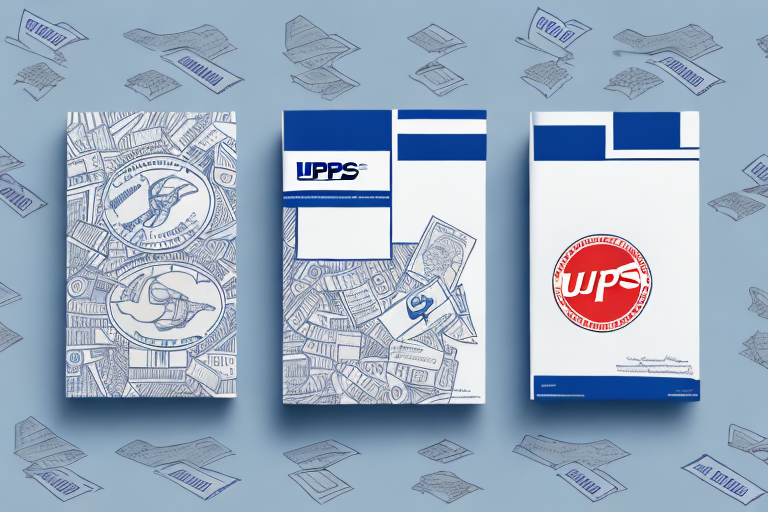Comparing USPS and UPS Shipping Book Rates
Choosing the right shipping carrier is crucial for both businesses and individuals. Shipping rates significantly influence this decision. In this article, we compare the shipping book rates of USPS and UPS, two of the most prominent shipping carriers in the United States.
Introduction to USPS and UPS Shipping Book Rates
Shipping book rates are standardized rates set by carriers based on factors like package weight and size, origin, and destination. These rates can be accessed through the carriers' rate books or online shipping calculators.
However, shipping book rates may not always be the most economical option. Depending on your package's specifics, alternative shipping methods such as flat-rate boxes or regional rate boxes might offer better value. Comparing various shipping options ensures you receive the best deal for your shipment.
What are Shipping Book Rates?
Shipping book rates form the foundation of the shipping industry by providing a consistent framework for shipping costs. They enable businesses to budget accurately for shipments without encountering unexpected expenses.
These rates are published by shipping companies and consider factors like package weight, size, destination, and transportation mode. Carriers update these rates regularly to reflect changes in fuel prices and other operational costs.
How to Determine the Shipping Book Rates for Your Package
You can find the shipping book rates for USPS and UPS on their official websites or by requesting a physical rate book. If your package doesn't fit standard categories, both carriers offer custom quotes based on specific package details. Additionally, online shipping calculators provide instant rate estimates.
Shipping book rates vary based on package weight, dimensions, and destination. It's advisable to compare rates from both carriers to secure the best deal. Some carriers also offer discounts for specific shipment types or frequent shippers, so exploring all available options is beneficial.
Comparison of USPS and UPS Shipping Book Rates for Domestic Packages
For domestic shipping within the United States, both USPS and UPS provide competitive shipping book rates. Generally, USPS is more cost-effective for lightweight packages, while UPS offers better rates for heavier shipments.
Delivery time is another critical factor. USPS Priority Mail typically delivers within 2-3 business days, whereas UPS provides various delivery options, including next-day delivery for an additional fee. If rapid delivery is essential, UPS may be the preferable choice.
USPS also offers flat-rate shipping options for specific package sizes, which can be economical for packages that meet the size and weight criteria. In contrast, UPS does not offer flat-rate shipping but provides a variety of packaging options to ensure package safety during transit.
Comparison of USPS and UPS Shipping Book Rates for International Packages
International shipping often incurs higher costs due to customs duties and taxes. USPS typically offers more affordable international shipping book rates compared to UPS. However, UPS provides faster shipping and more comprehensive tracking services for international shipments.
Shipping rates for international packages vary based on the destination country and package weight. Both USPS and UPS offer additional services like insurance and signature confirmation for extra fees. It's recommended to compare both rates and services before deciding which carrier best suits your international shipping needs.
Which Carrier Offers Better Rates for Small Packages?
For small packages weighing less than two pounds, USPS generally offers more competitive shipping book rates. Their Priority Mail Flat Rate Envelope and Small Flat Rate Box are cost-effective solutions for small and lightweight shipments.
However, for international small package shipments, UPS may provide better rates and faster delivery times. UPS offers a range of international shipping options, including express and economy services, tailored to specific needs.
Which Carrier Offers Better Rates for Large Packages?
UPS typically provides better shipping book rates for larger and heavier packages, leveraging their extensive network of cargo planes and trucks to offer competitive pricing.
It's important to note that rates can vary based on package dimensions, weight, and destination. Comparing rates from multiple carriers ensures you obtain the best deal for your specific shipment. Additionally, exploring discounts or special rates for businesses or frequent shippers can lead to further savings.
Understanding the Impact of Package Weight and Size on Shipping Rates
Package weight and size are critical factors influencing shipping book rates. Both USPS and UPS offer a variety of shipping services tailored to different package weights and sizes, directly affecting the shipping cost.
Dimensional weight, which is calculated based on a package's size rather than its actual weight, can also impact shipping costs. A lightweight package with large dimensions may incur higher rates than a heavier, smaller package.
Additionally, carriers may have restrictions on the maximum weight and size of packages. It's essential to verify that your package meets the carrier's requirements to avoid additional fees or delivery delays.
Additional Fees Charged by USPS and UPS on Shipping Book Rates
Beyond base shipping book rates, both USPS and UPS impose additional fees based on factors like package dimensions, service levels, and delivery specifics. It's crucial to review these fees carefully when selecting a shipping carrier.
Common additional fees include fuel surcharges, residential delivery fees, and address correction fees. Fuel surcharges account for fluctuating fuel prices, residential delivery fees apply when delivering to residential addresses, and address correction fees are charged when the provided shipping address is incorrect or incomplete.
Which Carrier Offers More Delivery Options?
Both USPS and UPS provide a range of flexible delivery options to accommodate customer needs. USPS offers services from standard First-Class Mail to Priority Mail Express, while UPS offers options like Next Day Air, Second Day Air, and Ground Shipping.
In international shipping, UPS offers more options compared to USPS. UPS services include Worldwide Express, Worldwide Expedited, and Standard shipping to over 220 countries and territories. USPS offers international services such as Priority Mail International and First-Class Package International Service, but their global coverage isn't as extensive as UPS's.
Additionally, UPS provides advanced delivery customization through services like UPS My Choice, allowing customers to adjust delivery preferences, reschedule deliveries, and receive delivery alerts. USPS offers Informed Delivery, which provides a digital preview of incoming mail but lacks the extensive customization options available with UPS.
Tracking Your Shipment: USPS vs. UPS
Both USPS and UPS offer online tracking services to monitor shipments in real-time. However, UPS's tracking system tends to provide more detailed information about package progress.
While UPS may offer more comprehensive tracking, USPS often presents more affordable shipping rates for smaller packages. Moreover, USPS boasts a broader network of post offices and drop-off locations, enhancing convenience for sending and receiving packages.
Customer Service Comparison between USPS and UPS
Both USPS and UPS are recognized for their quality customer service. However, UPS is particularly noted for its excellent customer support and responsive service teams.
UPS's advanced tracking system enhances customer service by allowing real-time package tracking and status updates. In contrast, USPS's tracking features are less detailed, which can sometimes lead to customer frustration.
Furthermore, UPS offers customized shipping solutions, including same-day delivery, international shipping, and freight services. This flexibility enables customers to select shipping options that best suit their needs, resulting in a more positive customer experience.
Which Carrier is More Reliable?
Reliability is paramount when choosing a shipping carrier. Both USPS and UPS are known for their dependable services and commitment to timely deliveries. However, UPS has a slight advantage in reliability due to its advanced logistics network, which enhances package tracking and management efficiency.
UPS invests significantly in its fleet of delivery vehicles, regularly updating and maintaining trucks and vans to ensure optimal performance and minimize delivery delays.
Meanwhile, USPS maintains a vast network of postal facilities, ensuring widespread coverage and accessibility, which contributes to its reliability in delivering packages across various locations.
Conclusion: Which Carrier Should You Choose for Your Shipments?
The choice between USPS and UPS ultimately depends on your specific shipping requirements. If you're shipping smaller packages and prioritize affordability and flexibility, USPS is likely the better option. Conversely, if you're handling larger packages and need faster delivery times with advanced tracking capabilities, UPS may be more suitable.
Regardless of your choice, it's essential to compare rates and thoroughly review the terms and conditions to avoid unexpected fees or delivery delays.




















